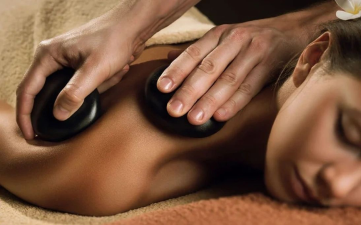Skincare routines have evolved significantly over the years, and with that evolution comes the inclusion of powerful ingredients that can transform your skin. One such ingredient that has garnered immense attention in the beauty world is retinol. Renowned for its anti-aging properties and ability to improve skin texture, retinol is a must-have in any nighttime skincare regimen.

Understanding Retinol
What is Retinol?
Retinol is a derivative of vitamin A, a vitamin essential for skin health. It belongs to a class of compounds known as retinoids, which are widely used in skincare for their ability to promote cell turnover, stimulate collagen production, and improve skin tone and texture. Retinol works by penetrating the skin and encouraging the production of new skin cells, ultimately helping to reduce the appearance of fine lines, wrinkles, and other signs of aging.
Benefits of Retinol for the Skin
The benefits of incorporating retinol into your nighttime routine are manifold:
-
Reduces Fine Lines and Wrinkles: Retinol boosts collagen production, which helps plump the skin and diminish the appearance of fine lines and wrinkles.
-
Improves Skin Texture: By promoting cell turnover, retinol helps exfoliate the skin, leading to a smoother and more refined surface.
-
Fades Hyperpigmentation: Retinol can help fade dark spots and uneven skin tone, promoting a more radiant complexion.
-
Unclogs Pores: Retinol can reduce the appearance of enlarged pores by keeping them unclogged, leading to clearer skin.
-
Enhances Overall Glow: Regular use of retinol can result in a more youthful and glowing complexion.
1. Start Slowly to Build Tolerance
The Importance of Gradual Introduction
When introducing retinol into your skincare routine, it is crucial to start slowly. Retinol can cause irritation, especially for those with sensitive skin or those who are new to retinoids. By beginning with a lower concentration and gradually increasing usage, you can help your skin build tolerance to the ingredient.
How to Start
-
Choose a Low Concentration: Start with a product that contains around 0.25 percent to 0.5 percent retinol. This concentration is effective yet gentle enough for beginners.
-
Use Every Other Night: Initially, apply retinol every other night or even two to three times a week. This allows your skin to adjust without excessive irritation.
-
Observe Your Skin: Pay attention to how your skin reacts. If you experience redness, dryness, or peeling, consider reducing the frequency or switching to a lower concentration until your skin acclimates.
Finding the Right Product
When selecting a retinol product, look for formulations specifically designed for nighttime use. These may include creams, serums, or oils that offer added hydration. Always check the ingredients to ensure they are suitable for your skin type.
2. Layer with Hydrating Ingredients
Why Hydration Matters
Retinol can be drying, particularly during the initial phase of use. To combat this dryness and irritation, layering retinol with hydrating ingredients is essential. This approach not only minimizes side effects but also enhances the overall effectiveness of your skincare routine.
Recommended Hydrating Ingredients
-
Hyaluronic Acid: This powerful humectant attracts moisture to the skin, helping to plump and hydrate. Look for serums that contain hyaluronic acid and apply it either before or after your retinol.
-
Glycerin: Glycerin is another excellent humectant that draws moisture to the skin. It can be found in many moisturizers and serums, making it easy to incorporate into your routine.
-
Peptides: These amino acid chains help improve skin elasticity and hydration. Incorporating peptide-rich products can also provide added anti-aging benefits.
How to Layer
-
Cleanse: Start with a gentle cleanser to remove makeup and impurities.
-
Hydrating Serum: Apply a hydrating serum containing hyaluronic acid, glycerin, or peptides.
-
Retinol Application: After your serum, apply a pea-sized amount of retinol to your face, avoiding the sensitive areas around the eyes and mouth.
-
Moisturizer: Finish with a nourishing moisturizer to seal in hydration and help reduce potential irritation.

3. Use an Eye Cream Formulated with Retinol
Targeting the Delicate Eye Area
The skin around the eyes is significantly more delicate than the skin on the rest of the face. While retinol is beneficial for this area, it is crucial to use a product specifically formulated for the eyes to avoid irritation.
Benefits of Retinol Eye Creams
-
Diminishes Dark Circles: Retinol can help brighten dark circles over time, contributing to a more youthful appearance.
-
Reduces Puffiness: Some retinol eye creams also contain ingredients that help Reduce puffiness, making the eyes look more refreshed.
-
Smooths Fine Lines: Eye creams designed with retinol can help improve the look of crow’s feet and other fine lines.
How to Incorporate an Eye Cream
-
After Cleansing: Once you have cleansed your face, apply your hydrating serum as usual.
-
Apply Retinol Eye Cream: Use your ring finger to gently dab a small amount of retinol eye cream around the orbital bone, avoiding direct contact with the eyes.
-
Proceed with Retinol for the Face: After applying the eye cream, continue with your retinol application to the face and finish with your moisturizer.
4. Prioritize Consistency and Routine
The Importance of a Regular Routine
Achieving noticeable results with retinol requires consistency. Incorporating it into your nightly skincare routine can lead to significant improvements over time. It is essential to treat retinol as a long-term commitment to your skincare rather than a quick fix.
Establishing a Nighttime Routine
-
Consistency is Key: Aim to apply retinol on the same nights each week to establish a habit. Mark your calendar or set reminders if necessary.
-
Create a Nighttime Ritual: Consider incorporating other relaxing elements into your nighttime routine, such as soothing candles, calming music, or skincare tools like jade rollers to enhance your overall experience.
-
Monitor Progress: Keep track of how your skin changes over time. Consider taking photos to document your progress, as results can take several weeks to become noticeable.
Be Patient
While results from retinol can take time, avoiding the temptation to use higher concentrations or rush the process is crucial. Patience is essential as your skin adjusts and begins to reveal the benefits of retinol.
5. Pair with a Gentle Exfoliating Routine
Benefits of Exfoliation
Exfoliation is an essential part of any skincare routine, as it helps remove dead skin cells, unclog pores, and enhance the absorption of other products. By combining retinol with gentle exfoliation, you can achieve even better results.
Choosing the Right Exfoliant
-
Chemical Exfoliants: Products containing alpha hydroxy acids (AHAs) like glycolic acid or beta hydroxy acids (BHAs) like salicylic acid can help exfoliate the skin. However, avoid using these on the same nights as retinol to minimize irritation.
-
Physical Exfoliants: If you prefer physical exfoliants, choose a gentle scrub without harsh beads to avoid damaging the skin. Use these once a week for best results.
How to Incorporate Exfoliation
-
Exfoliation Schedule: Reserve exfoliation for nights when you are not using retinol. For example, if you use retinol three times a week, you can exfoliate once or twice a week on alternate nights.
-
Gentle Approach: Ensure that the exfoliant you use is suitable for your skin type. For sensitive skin, opt for mild exfoliants to avoid irritation.
-
Follow with Retinol: On nights when you exfoliate, allow your skin to rest for a while before applying retinol. This helps reduce the risk of irritation and maximizes the benefits of both products.
Conclusion
Incorporating retinol into your nighttime skincare routine can revolutionize your approach to skincare, offering numerous benefits such as improved texture, reduced fine lines, and a more radiant complexion. By taking a thoughtful approach—starting slowly, layering with hydrating ingredients, using targeted eye products, maintaining consistency, and pairing with gentle exfoliation—you can maximize the effectiveness of retinol while keeping potential irritation at bay.
As with any skincare product, remember that results may take time, and each individual's skin reacts differently. Consult with a dermatologist if you have concerns or specific skin conditions. With patience and consistency, retinol can become a powerful ally in achieving your skincare goals.



